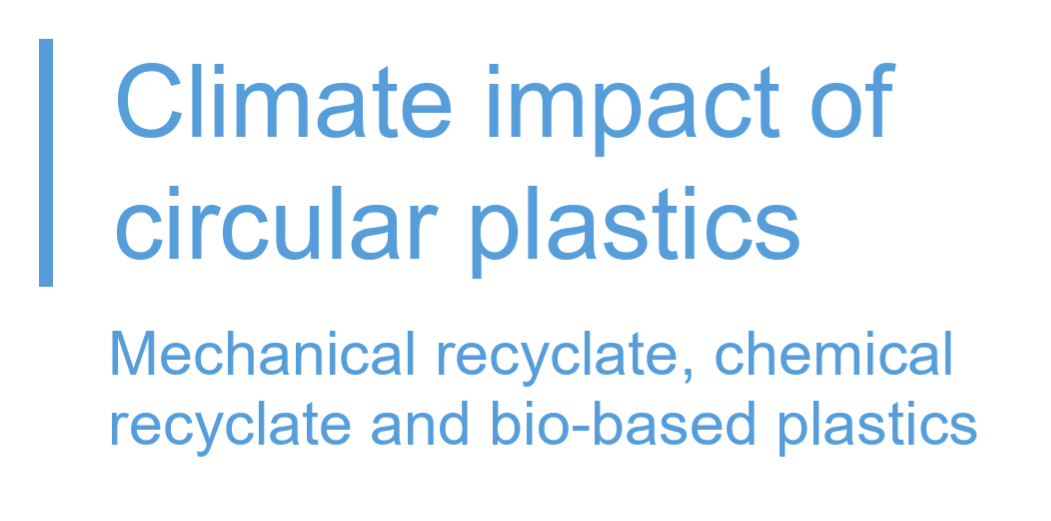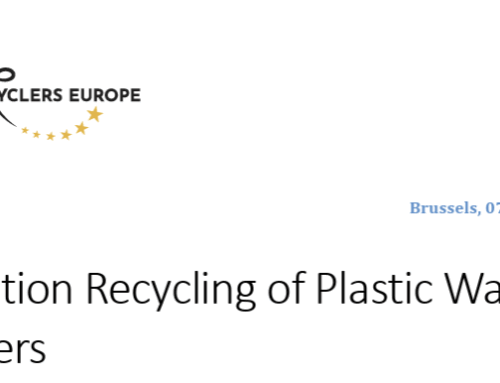When CE Delft published its Climate Impact of Circular Plastics report earlier this year, one chart stood out. For polyethylene (PE), one of the world’s most common plastics, dissolution recycling delivers the same low carbon footprint as mechanical recycling — and dramatically less than chemical recycling.
It’s a simple conclusion, but a powerful one. Because it confirms what many of us in recycling have long believed: the cleanest, most circular future for plastics doesn’t come from breaking polymers apart. It comes from keeping them whole.
At ReVentas, that belief sits at the core of everything we do. Our technology — selective dissolution — belongs to the same family as mechanical recycling. We call it physical recycling, because the polymer’s molecular structure remains intact. What changes is its purity.
Through selective dissolution, we dissolve post-consumer or mixed plastic waste to separate out inks, additives and contaminants, while preserving the polymer itself. When it re-precipitates, it returns as virgin-like resin — colourless, odourless, and pure enough for food-grade applications. No downcycling. No compromise.
CE Delft’s report puts this into context. It shows that for PE, mechanical recycling typically produces between 0.3 and 1.5 kg CO₂-equivalent per kilogram of material. Dissolution sits right alongside it, at roughly 0.8 kg. By comparison, chemical recycling through pyrolysis emits more than 3.3 kg CO₂-equivalent — higher even than virgin fossil PE production at about 2.4 kg
Those numbers matter. They tell a story of two very different philosophies. One — pyrolysis — burns part of the plastic feedstock to make fuel for its own process, releasing carbon and losing material along the way. The other — dissolution — keeps the polymer chain whole, so almost everything that goes in comes back out again as usable resin.
For ReVentas, that approach is deliberate. Our process uses commodity solvents, low temperatures, and regenerative loops that recover heat and reuse solvents. The result is a low-energy, low-carbon system with yields approaching 98 %. It’s lean engineering: fewer inputs, less waste, more value.
And it’s built to complement, not compete with, mechanical recycling. Where mechanical systems handle clean, single-polymer streams, ReVentas’ selective dissolution tackles the complex and contaminated waste that usually ends up downcycled or incinerated. Together, these technologies form a true circular platform for plastics — one that finally bridges purity, performance and sustainability.
The purity matters as much as the carbon. Recycled plastics have long struggled with the perception that “recycled” means lower quality — grey, inconsistent, not food-safe. We designed our process to change that. The polymer that leaves our system is free from odour and additives, with mechanical and chemical properties indistinguishable from virgin material
It can go straight back into high-value applications — packaging, cosmetics, automotive components — without compromise.
That’s what makes dissolution such a breakthrough. It doesn’t just reduce emissions; it restores confidence in circular materials. It proves that recycled plastic can meet the same performance standards as new plastic, while doing less harm to the planet.
The CE Delft study also offers a reminder that not all “recycling” delivers the same benefit. Pyrolysis, often presented as a cure-all for mixed waste, still releases more carbon than it saves. Its yields hover around fifty per cent, meaning half of what goes in is lost as gas or by-product. That’s not circularity; that’s combustion in disguise.
Dissolution, by contrast, is circularity made practical. It works at lower temperatures, avoids unnecessary emissions, and produces material that can be recycled again and again. It doesn’t rely on offsetting or creative accounting. Its impact is measurable, direct, and verifiable.
That’s why CE Delft’s conclusion resonates so strongly with us. It validates the path we’ve chosen — and the one we’ve been proving through patents, pilots, and data. By keeping the polymer intact and removing only what doesn’t belong, selective dissolution shows how circularity can scale without trading purity for carbon savings.
It’s also why we talk about purity as design, not chance. Our process was built from the ground up to be efficient, elegant and circular — using fewer resources to achieve a higher standard. Every parameter, from solvent choice to energy recovery, was engineered for precision. The result is a system that honours the value already built into the polymer, rather than destroying and rebuilding it.
The science now backs up what we see every day in our lab and pilot plant: dissolution recycling is the most sustainable way to keep plastics in circulation. It’s a physical, not chemical, solution — and one that turns even the most challenging waste streams into new opportunity.
At ReVentas, we see that as more than validation. We see it as direction. A clear signal from independent research that the future belongs to technologies designed to do more with less. Lower carbon, higher purity, maximum value.
That’s what we mean when we say circularity should be simple.
To learn more about how ReVentas is redefining purity in plastics recycling — and to see how selective dissolution is setting a new standard for circularity — get in touch with us.

